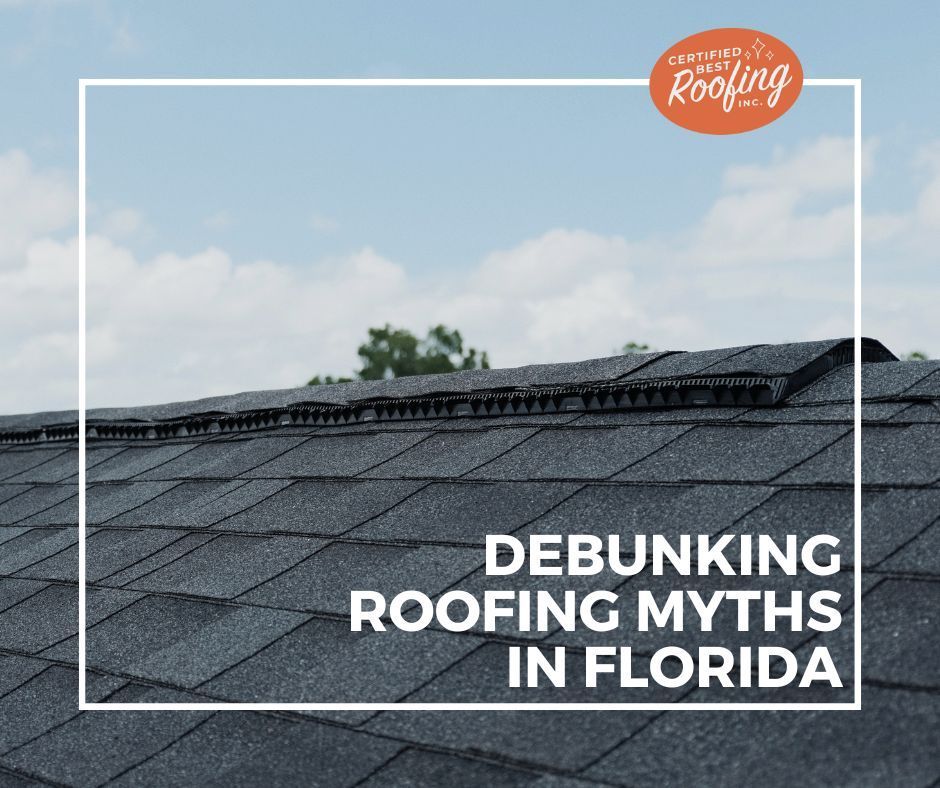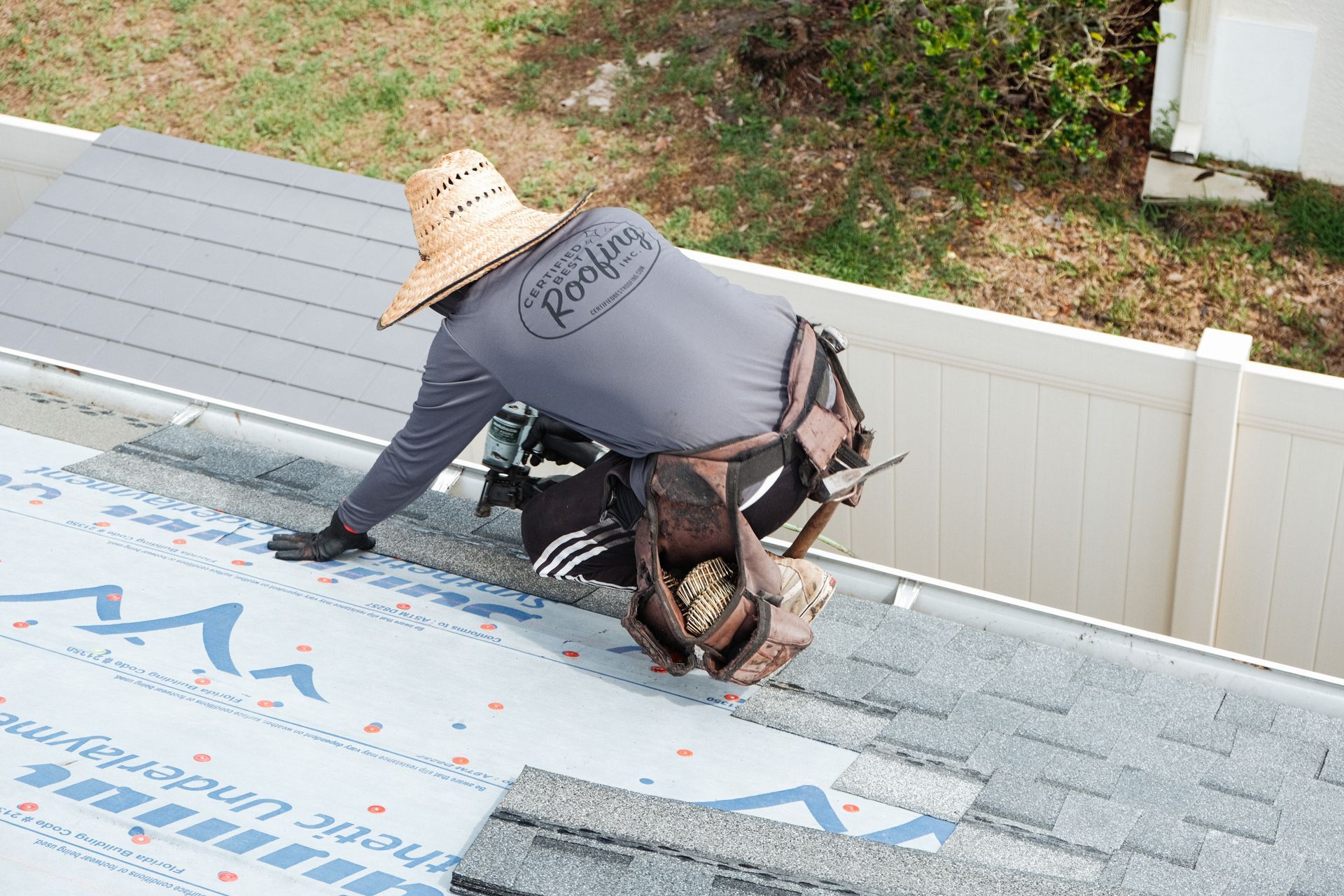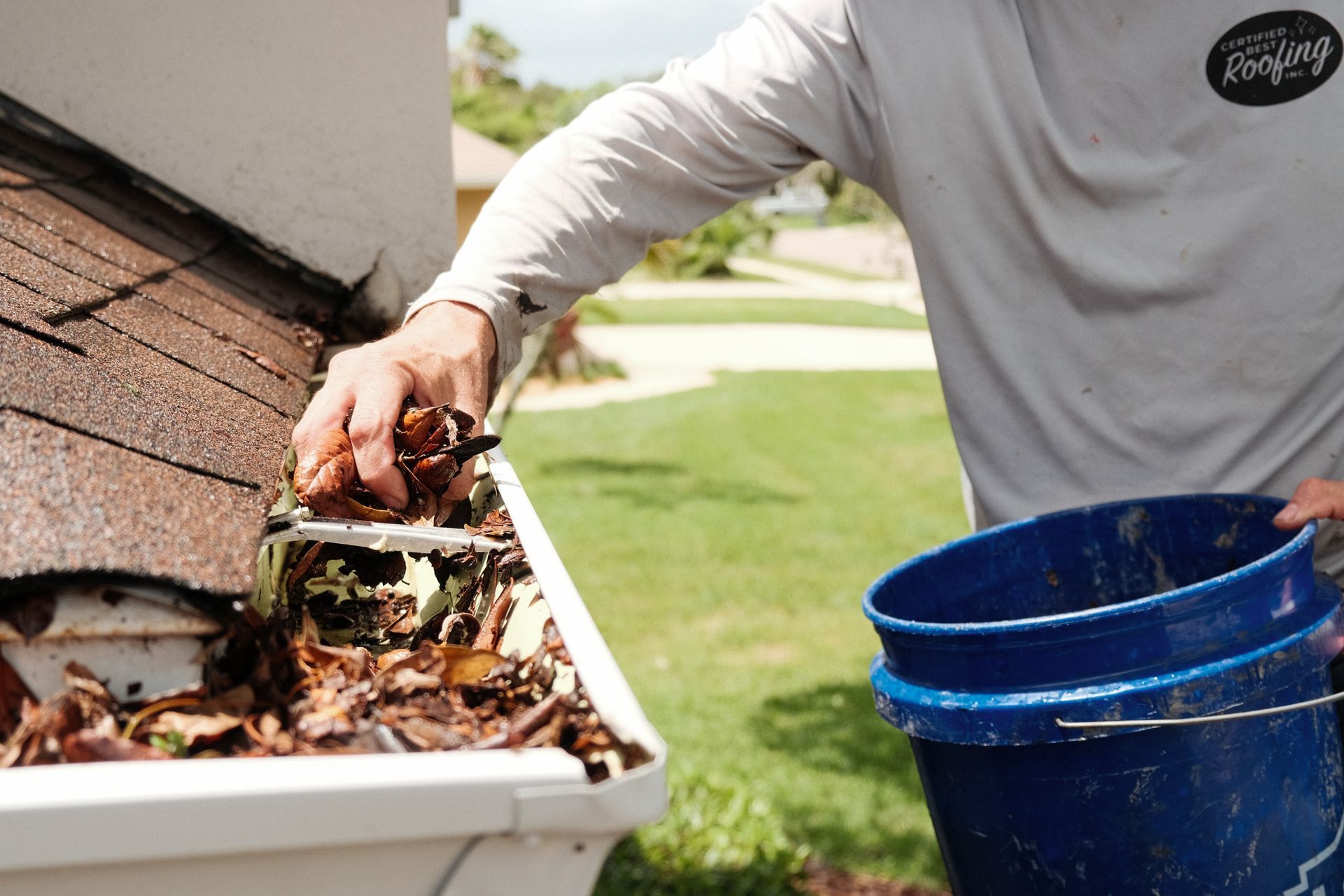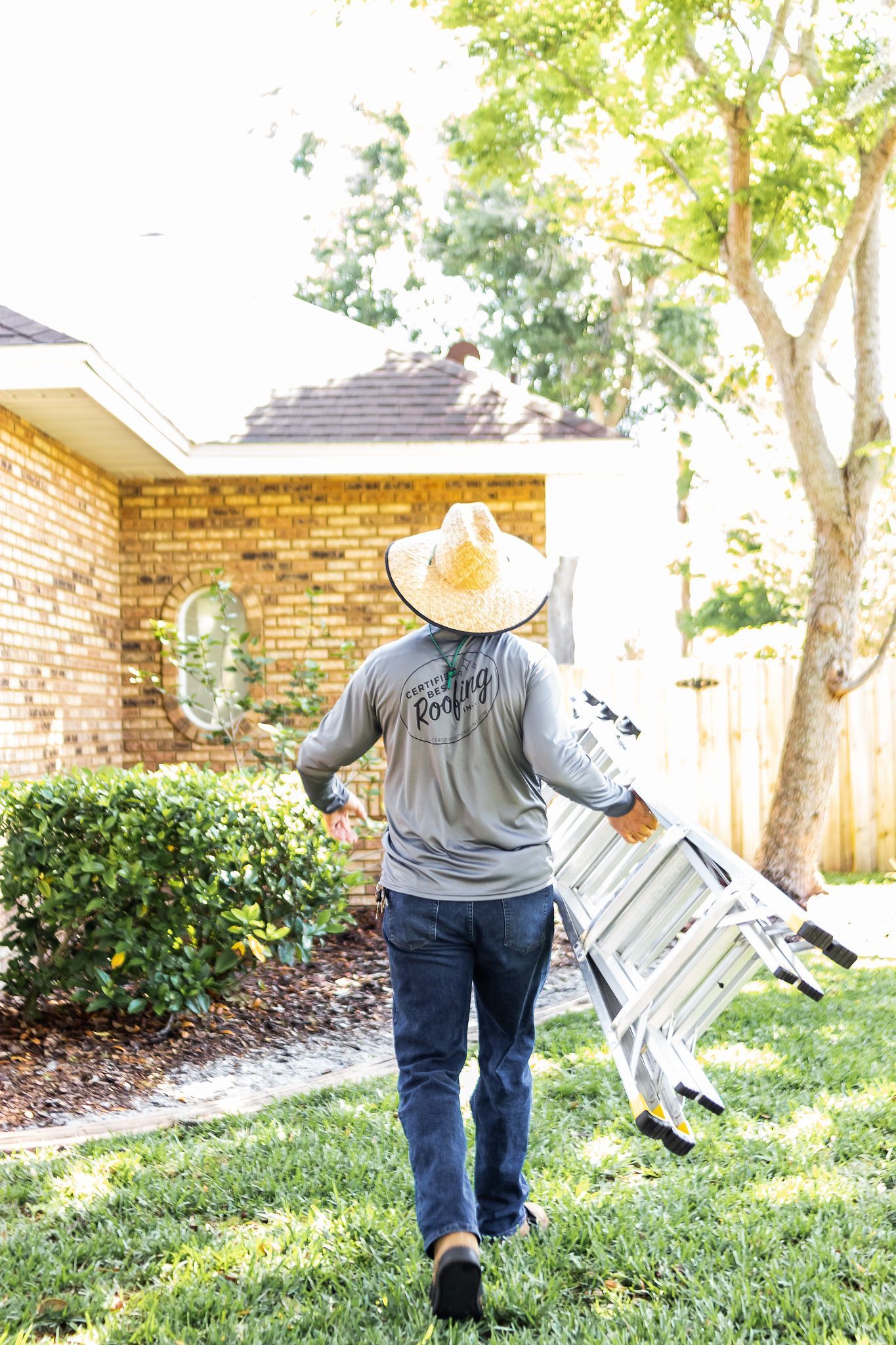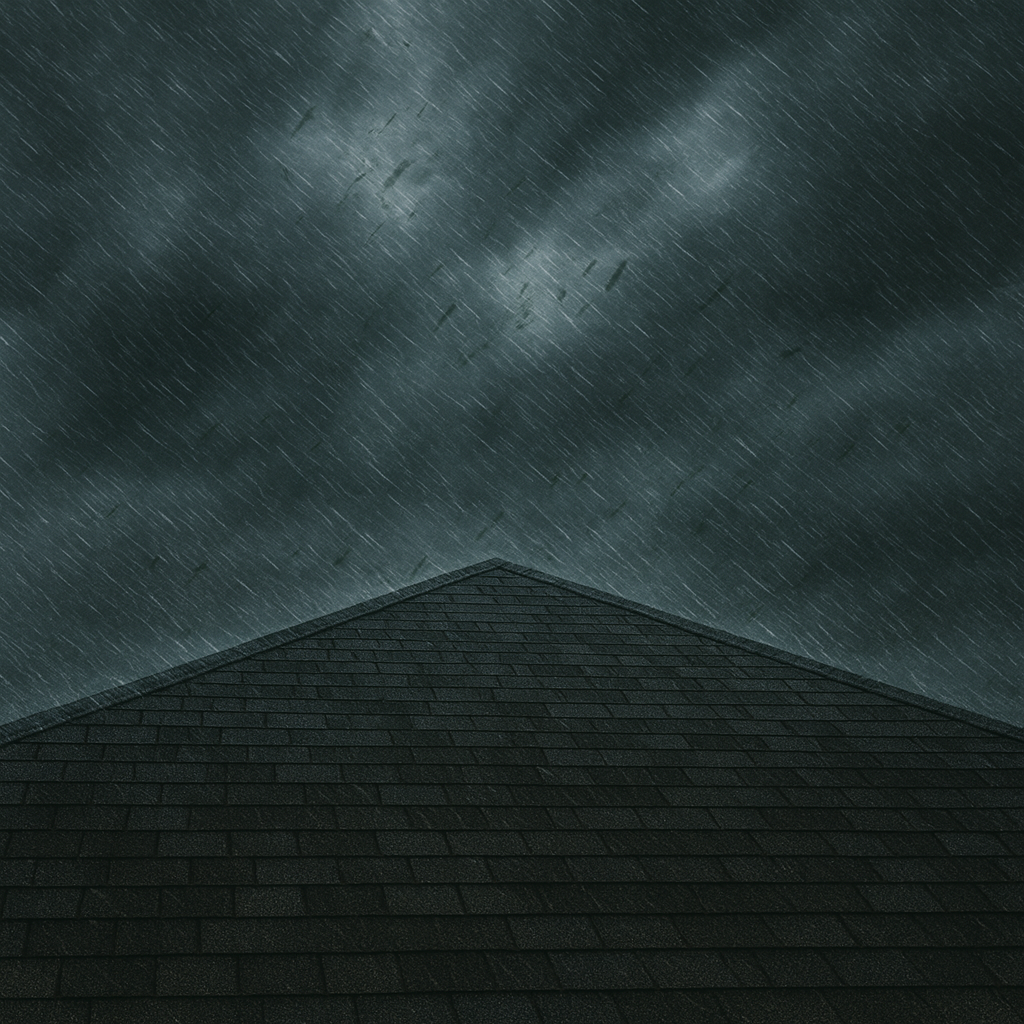Florida’s Rainy Season: How to Prepare Your Roof for Heavy Rains
1. Understand Why Rainy Season Preparation Matters
The rainy season in Florida typically runs from late spring through early fall, though the exact timing can vary from year to year. During this period, afternoon thunderstorms and tropical systems are common. When heavy rains come, any weak spot in your roof can let water seep into your home. Once water gets in, it can ruin insulation, damage ceilings and walls, and create a breeding ground for mold. In extreme cases, untreated leaks can even weaken your home’s structure.
By preparing your roof ahead of the rainy season, you’ll reduce the risk of costly repairs. You’ll also avoid the stress of dealing with sudden leaks in the middle of a heavy storm. Being proactive allows you to catch minor issues—like a missing shingle or a cracked seal—before they become major problems. This approach not only protects your home but also helps maintain your property value. A well-cared-for roof can last for many years, saving you money and worry in the long run.
2. Start with a Visual Inspection
The first step in getting your roof ready for heavy rains is a basic inspection. You don’t have to climb onto the roof for this; in fact, it’s safer to stay on the ground unless you have the right equipment and experience. Instead, walk around your home and look up at the roof with a critical eye. Check for any curled, loose, or missing shingles. Look for patches that seem a different color or texture, as these might be areas that are damaged or worn out. If you notice dips in the roof line, that could mean structural concerns underneath the shingles.
Take note of anything that looks “off.” Even a slight gap or a tiny crack can let water in once the rains start. It’s also smart to stand across the street from your home and look at the entire roof surface. Sometimes, the best view is from farther away, where you can spot uneven spots or a change in color. If you see something suspicious or you’re not sure, it’s a good idea to call a professional roofer for a closer look.
3. Clean and Inspect Gutters
Your gutters are a key part of your roof system because they channel rainwater away from your home. When gutters get clogged with leaves, twigs, or dirt, water backs up. This can force water under the roof edges or cause overflow that damages siding and foundations. Before the rainy season starts, make sure to clean your gutters thoroughly. You can do this by hand or with a gutter scoop, but be careful if you’re working from a ladder. Safety should always come first.
Once the gutters are clean, run water through them with a garden hose to see if it flows smoothly. Check for leaks where gutter sections join or at the downspouts. If you notice any gaps or cracks, use a gutter sealant to fix them. Also make sure downspouts direct water several feet away from your house. If they’re too close, consider adding extensions. After a heavy rain, it’s good to inspect the gutters again. Debris can pile up faster than you expect, especially if you have large trees near your home.
4. Trim Trees and Remove Debris
Overhanging branches can pose a real risk to your roof, especially during storms. High winds can break branches off, sending them crashing onto your shingles or into your gutters. Even smaller twigs can scrape your roof’s surface, wearing away protective granules over time. Leaves and palm fronds can also accumulate on the roof, blocking gutters and trapping moisture. Damp debris left on your roof can lead to mold and rot if not cleared away.
Before the rainy season, take a look at any trees near your house. Trim back branches so they’re at least a few feet away from the roof’s edge. You don’t want them leaning over or touching the roof. If the job involves large limbs or tall trees, consider hiring a professional arborist to make sure it’s done safely. Also, remove any piles of leaves or other debris that may have collected in corners or valleys of your roof. Keeping your roof debris-free helps rainwater drain properly and reduces the risk of damage.
5. Inspect and Repair Flashing
Flashing is the metal (or sometimes rubber) material around roof features like chimneys, vents, skylights, or where the roof meets a wall. It’s meant to seal these edges and prevent water from leaking in. Over time, flashing can loosen or corrode due to heat, moisture, and normal wear. When flashing fails, water has an easy path into your home.
Check your flashing for cracks, rust, or gaps. If you’re not comfortable climbing on the roof, a professional can do this part of the inspection for you. They can also reseal or replace flashing that’s in bad shape. This small step can make a huge difference in preventing leaks during Florida’s heavy rains. Remember, flashing problems often lead to hidden leaks that don’t show up until the damage is significant, so don’t skip this step.
6. Check for Cracked or Missing Shingles
Shingles are your roof’s main layer of defense against rain, wind, and sun. If they’re cracked or missing, your roof deck is exposed to the elements. Over time, this can let water seep in, soak the underlayment, and cause rot or mold in the roof structure. While performing your inspection, pay special attention to areas that get more wear, such as the corners and the places near vents or chimneys.
If you spot a few damaged shingles, you might be able to replace them yourself, but be cautious. Working on a roof can be dangerous if you’re not experienced. A professional roofer knows how to locate the exact color and style of shingle to match your existing roof. They’ll also make sure the repairs are done correctly, so you don’t have to worry about those spots during the next big storm. Replacing a few shingles now is much cheaper than fixing widespread damage later.
7. Examine the Attic
Many roofing problems start in the attic, or at least make themselves known there first. After you’ve checked the exterior, head upstairs or into your attic space with a flashlight. Look for water stains, streaks, or damp insulation. Pay special attention to places where the roof structure is visible, like near the eaves or around vents. Even a small water mark might indicate a slow leak that could worsen during a heavy downpour.
You’ll also want to check for signs of mold or mildew. A musty smell in the attic often means there’s moisture lurking somewhere. Make sure your attic is well-ventilated, too. Proper ventilation helps keep the attic cooler and reduces moisture buildup. If you see any concerning spots, schedule a professional inspection. Catching a small leak now can save you from major headaches later when the rains roll in.
8. Consider Professional Roof Maintenance
While some homeowners feel comfortable tackling small repairs and cleanups on their own, there’s nothing like a professional roof maintenance service to ensure you haven’t missed anything. A roofing contractor can spot subtle issues like lifted shingles, nail pops, or loose flashing you may not notice from the ground. They’ll also have the proper safety gear to climb onto the roof and examine spots you can’t see otherwise.
Many roofers offer seasonal checkups or maintenance plans, especially in Florida, where the rainy season is a busy time for repairs. By scheduling a maintenance visit in late spring or early summer, you’ll have a clear picture of your roof’s condition before peak rain hits. If any work needs to be done—like sealing a gap or replacing a row of shingles—you can get it handled before storms become a daily event.
9. Seal and Protect Vulnerable Areas
Even if your shingles are in great shape, there may be other vulnerable areas on your roof that need extra protection. Flat roofs, for example, can collect water if they’re not angled correctly or if drains are blocked. In these cases, a special sealant or coating might help repel water and prevent leaks. Likewise, the edges of your roof or spots around skylights might benefit from roof cement or waterproof membranes.
If you have older vents or skylights, consider upgrading them. Many modern products come with built-in flashing or are designed to handle heavier rainfall. A small investment in better hardware now could save you from multiple repairs down the line.
10. Plan for Emergencies
Even the most well-prepared roof can suffer damage during severe storms. High winds, flying debris, or tornados spinning off from tropical systems can rip off shingles or puncture your roof. That’s why it’s important to have an emergency plan. Keep a few tarps, roofing nails, and basic tools on hand in case you need a quick, temporary patch. Make sure you have the contact information for a reliable roofing contractor and your insurance company ready to go.
Also, check your home insurance policy to see what it covers when it comes to storm damage. Some policies may have specific deductibles for hurricane-related damage or require certain roof standards. Knowing your coverage in advance will help you react quickly if something happens.
11. Stay on Top of Small Repairs
One of the biggest mistakes homeowners make is putting off small fixes. It might seem like a minor leak or a single missing shingle isn’t a big deal, but water has a way of finding and enlarging weak spots. During Florida’s rainy season, a tiny crack can let in a surprising amount of water. Before long, you might have stained ceilings, soggy insulation, or even structural problems in your home.
Taking care of small repairs as soon as you notice them will keep your roof strong and save you money. It’s also a good idea to schedule another quick inspection after a particularly strong storm, especially if you notice any debris on your roof or yard. The sooner you handle any problems, the better off you’ll be when the next round of storms rolls through.
12. Benefits of Preventive Maintenance
Sometimes, people see roof maintenance as a chore or an extra expense they’d rather skip. But think of it like changing the oil in your car. If you never change the oil, eventually you’re going to have major engine trouble. In the same way, ignoring your roof until a leak appears can lead to much bigger expenses. Routine maintenance extends the life of your roofing materials, delays the need for a full replacement, and keeps energy costs down by preventing air leaks and water damage.
A well-maintained roof also adds to your home’s resale value. Potential buyers often ask about the age and condition of the roof. If you can show you’ve kept it in good shape—complete with receipts, inspection reports, or photos—that can make your property more attractive. Preventive maintenance is truly an investment in your home, helping you avoid high repair bills and preserving the comfort and safety of your living space.
13. Final Thoughts on Preparing for Florida’s Rainy Season
Florida’s rainy season can bring heavy downpours, strong winds, and even threats of tropical storms or hurricanes. But a little preparation goes a long way in protecting your roof and the rest of your home from water damage. By following these steps—inspecting your roof, cleaning gutters, trimming trees, sealing problem areas, and considering professional help—you can stay one step ahead of the rain. No roof lasts forever, but regular maintenance can extend its life and spare you from sudden, costly repairs.
Remember that every home is unique, and the type of roof you have (asphalt shingles, metal, tile, or flat) might require some specific care. When in doubt, consult a professional roofer who understands Florida’s climate and weather patterns. Their expertise can save you time, money, and stress in the long run. So, as the rainy season approaches, give your roof the attention it deserves. A little work now can help you enjoy the sound of rain on the roof—without worrying about leaks or water damage inside your home.
Don’t wait until the downpours start. Contact our team today to schedule a professional roof inspection and get your home ready for Florida’s rainy season. A little prep now can save you big headaches later!
